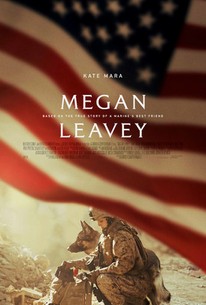Part 3 of 3
In previous Beacon posts (here and here) I explained that interventionists had often “moved the goalposts” in policy debates in which I’d participated. I first recounted an episode where Paul Krugman had moved the goalposts in a dispute over so-called fiscal austerity, and then I discussed the phenomenon in the context of the climate-change policy debate.
In the present post, I’ll focus on an example from the debate about Obamacare and Medicaid. As I stressed in the previous articles in this series, I don’t mean to suggest that only interventionists use this frustrating debate tactic. But since they often deem themselves as more scientific and rational than their opponents, it is particularly useful to document the examples in this 3-part series.
Episode #3: The Oregon Medicaid Experiment
Back in 2008, the state of Oregon had the funds to expand Medicaid coverage for its residents, but not enough money for all applicants. Therefore the state government employed a lottery to see who would get Medicaid and who would be denied. It was a great setup for an academic study, because it was one of the few times when researchers would have a literally controlled experiment. An academic team—including MIT’s Jonathan Gruber, the (in)famous proponent of the Affordable Care Act—received approval to go ahead with a two-year study of 10,000 Oregon residents, some of whom received Medicaid and some of whom were denied.
Normally, studies of Medicaid are plagued by a selection bias, because the people who are on Medicaid would tend (for other reasons) to be in poorer health. Additionally, the states that can afford to expand Medicaid might do so because they have a booming economy, which itself might promote better health outcomes. In such a context, researchers may quibble over the relevance of the results because of the confounding factors. The absence of such factors is the reason Oregon’s lottery design was such a unique opportunity for researchers.
Indeed, progressive fans of Medicaid publicly recognized just how significant the Oregon study was. After the first year of results came in, things looked very promising. For example, in 2011 Ezra Klein wrote a piece for Bloomberg in which he referred to the Oregon Medicaid study as the “gold standard” in the field. He was confident that the study showed “Medicaid matters” because the participants who got Medicaid all had better scores on access to various types of care.
In his 2011 piece, Klein didn’t mention any possible shortcomings of the study on the question of how Medicaid affects recipients versus non-recipients. No, at this point it was the “gold standard,” and Klein wished we had other studies with similar design that could be applied to other questions. Indeed, Klein, tongue-in-cheek, whimsically wished the Oregon study had shown that Medicaid doesn’t help recipients:
When writing a column, you want surprising results. “Health Insurance Doesn’t Improve Health” is a great headline, even if it isn’t great news. But by September 2009, after the first year of coverage and data collection, the Oregon experiment wasn’t returning surprising results. Just encouraging ones.
But then a funny thing happened. After the second (and final) year of the study, the benefits of Medicaid were not nearly so obvious. It was still true that the Oregon participants who’d gotten Medicaid were better off financially, and they still reported to interviewers that they were in better health (compared to the control group who lost the lottery and were denied Medicaid coverage).
Yet on every one of the physical measures of health used in the study—such as blood pressure or cholesterol—there was no statistically significant improvement in the Medicaid group vs. the non-Medicaid group. This seems to be exactly what Klein said would have been a surprising finding that a headline writer would have relished.
Yet oddly, when opponents of more government in health care bring up this awkward result, suddenly the progressive proponents of Medicaid don’t call the Oregon study “the gold standard.” For example, Oren Cass is a critic of Obamacare who has been disputing the now-popular claim that Obamacare has saved tens of thousands of lives. Since Obamacare achieved increased health insurance coverage of Americans largely through Medicaid expansion, the Oregon study is quite relevant. Cass recently summarized the Oregon results for his readers by writing, “In a randomized trial in Oregon that gave some individuals Medicaid while leaving others uninsured, recipients gained no statistically significant improvement in physical health after two years.”
Cass’s language was quite precise and accurate. This is how the Oregon researchers themselves (including Jonathan Gruber) summarize their results:
In the first one to two years of coverage, Medicaid improved self-reported health and reduced depression, but had no statistically significant effect on several measures of physical health.
And yet, Ezra Klein argued that Oren Cass was wrong in his claims about the Oregon experiment. Thus, Klein is implicitly arguing that the Oregon researchers themselves didn’t understand their results as well as Klein did. (Also note that Klein edited his original article, so now you have to scroll to the bottom to see him talking about Oren Cass.) Furthermore, there is now no longer any talk from Klein of the study being the “gold standard,” after which other studies should be modeled. Nope, this is how Ezra Klein now talks about the Oregon Medicaid study:
These [conservative] arguments are mainly referencing a study known as the Oregon Medicaid experiment. The study took advantage of a situation that reads like a dark satire of the American health care system: Oregon had money to expand Medicaid, but not enough money, so it held a lottery for poor people who needed health insurance. If you won the lottery, you got Medicaid; if you lost the lottery, you got nothing.
This created two similar groups that researchers could study: one that got Medicaid, and one that didn’t. The study only lasted two years, and it only included 10,000 people, so there is much it can’t tell us about the long-term effects of having health insurance…
But the study also disappointed Medicaid’s backers: In particular, there was no evident improvement in blood sugar, blood pressure, or cholesterol levels after two years.
Some researchers have argued that the study didn’t have enough enrollees to measure those indicators…
But the Oregon study isn’t the only important study on the effects Medicaid has on health outcomes. [Bold added.]
As with our other examples, my major problem here isn’t that Ezra Klein’s specific objections to Oren Cass (and other conservatives citing the Oregon study) are dubious. Rather, my point is that Klein’s tone now is night-and-day different from how Klein described the Oregon study back when it supported his policy views. Back in 2011, we never heard any misgivings about the study only lasting two years and only including 10,000 people. No, back then it was the “gold standard” and it confirmed that Medicaid improves the health of its recipients.
Conclusion
In this 3-part series of posts I’ve summarized three episodes in which progressive proponents of more government intervention have moved the goal posts in the middle of a debate. To reiterate, this is a human tendency not unique to interventionists. But it is particularly ironic that this group engages in the practice when they so often accuse their opponents of being unscientific and ignoring evidence.
* * *
For more on economic theory and public policy, see Choice: Competition, Enterprise, and Human Action, by Robert P. Murphy.
 I am a fan of astrophysicist Alex Filippenko, a famous prof at UC Berkeley. When I was homeschooling my stepson John Allen Hunley, we used a huge set of DVD’s in which Filippenko presents a fascinating intro course on astronomy and astrophysics. He is a wonderful teacher. My point here, however, is that in relation to what Filippenko knows and has accomplished in his field, I am a complete nincompoop. If I were to write a book aimed at showing how he has played a central role in bringing about a coup by astrophysicists to take over the U.S. government and turn its telescopes on the common people, everyone would rightly regard me as a total nut case.
I am a fan of astrophysicist Alex Filippenko, a famous prof at UC Berkeley. When I was homeschooling my stepson John Allen Hunley, we used a huge set of DVD’s in which Filippenko presents a fascinating intro course on astronomy and astrophysics. He is a wonderful teacher. My point here, however, is that in relation to what Filippenko knows and has accomplished in his field, I am a complete nincompoop. If I were to write a book aimed at showing how he has played a central role in bringing about a coup by astrophysicists to take over the U.S. government and turn its telescopes on the common people, everyone would rightly regard me as a total nut case. An interior monologue by North Korea’s dictator might go something like this:
An interior monologue by North Korea’s dictator might go something like this: I spent a large amount of my research time in the 1970s and early 1980s engaged in studies of race and economics in the USA, especially in the South. Among the conclusions I reached as a result of
I spent a large amount of my research time in the 1970s and early 1980s engaged in studies of race and economics in the USA, especially in the South. Among the conclusions I reached as a result of  The most satisfied people leaving the theater after seeing the biopic
The most satisfied people leaving the theater after seeing the biopic  The film
The film People on both the right and the left routinely commit the funding fallacy when they assess research and writing. This fallacy is a variant of the hoary rule, Follow the money. The idea is that if an institution or person funded an analyst’s work directly or indirectly, that analyst was ipso facto a hired gun who merely strove to do the funder’s bidding.
People on both the right and the left routinely commit the funding fallacy when they assess research and writing. This fallacy is a variant of the hoary rule, Follow the money. The idea is that if an institution or person funded an analyst’s work directly or indirectly, that analyst was ipso facto a hired gun who merely strove to do the funder’s bidding.




